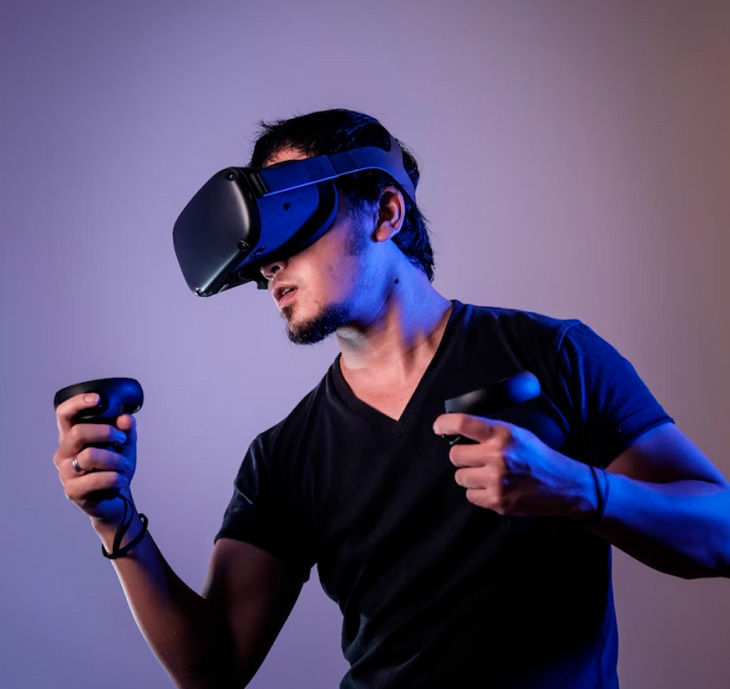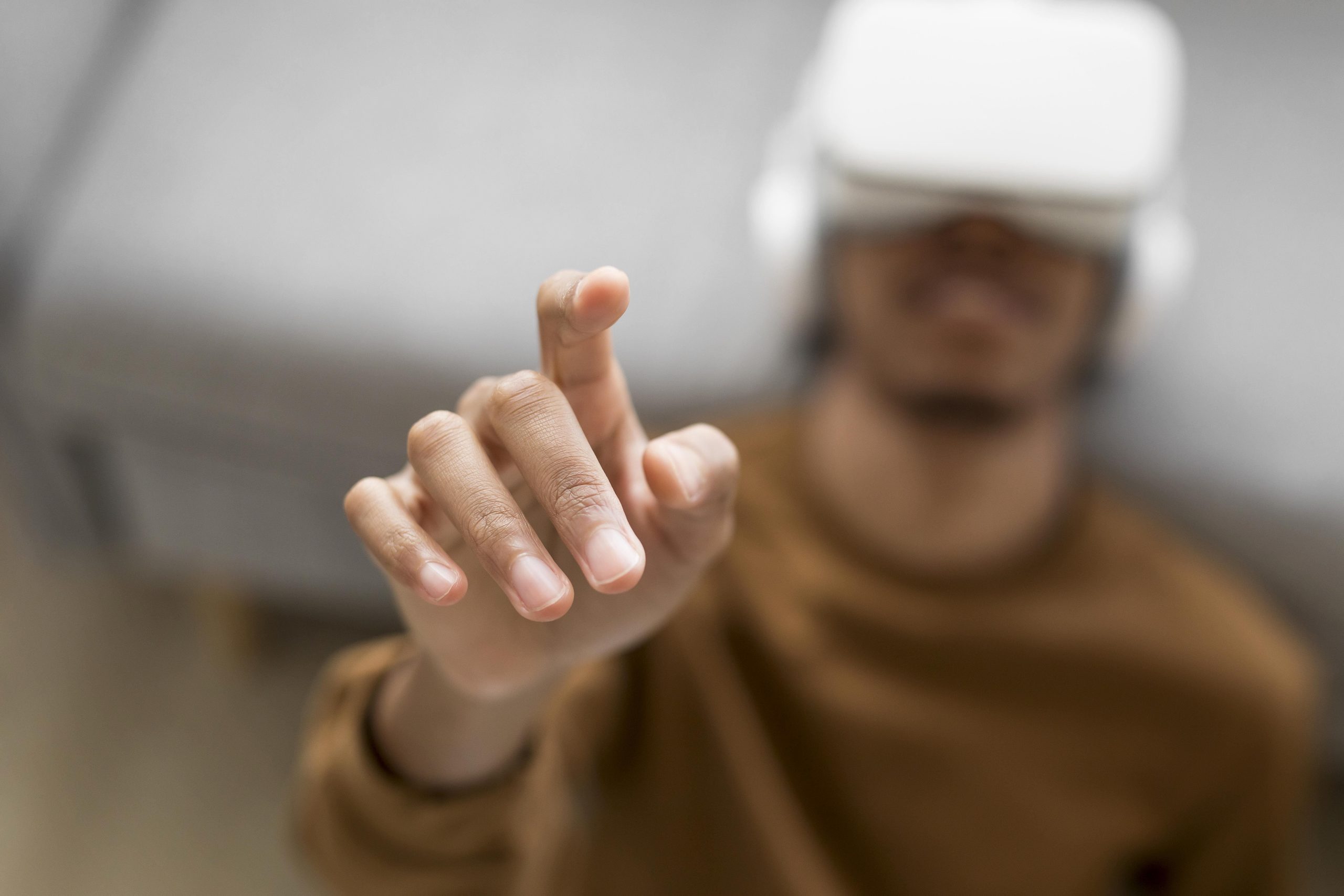Extended Reality (XR) is a comprehensive term that encapsulates an exciting spectrum of immersive technologies, promising to reshape the way we interact with the digital and physical worlds. In this in-depth exploration, we will delve into the intricate realm of Extended Reality, understanding its underlying technologies, the unique experiences it offers, its profound implications across various industries, and its role in the ongoing evolution of digital experiences.
Unpacking Extended Reality (XR)
Extended Reality (XR) is an all-encompassing term that encompasses a broad range of immersive technologies, including Virtual Reality (VR), Augmented Reality (AR), Mixed Reality (MR), and other related advancements. At its core, XR seeks to dissolve the boundaries that traditionally separate our digital and physical experiences, creating a blended reality where virtual and real elements coexist and interact seamlessly.
The XR Spectrum
The XR spectrum represents a continuum of experiences, each offering distinct features and applications:
- Virtual Reality (VR): At one end of the spectrum lies VR, a technology that immerses users in entirely digital environments. VR users typically wear headsets that transport them to simulated worlds, where they can interact with objects and scenarios as if they were real.
- Augmented Reality (AR): In the middle of the spectrum, AR overlays digital content onto the user’s real-world environment. AR enhances real-world experiences by adding layers of digital information, which can be accessed through devices like smartphones, tablets, AR glasses, and heads-up displays.
- Mixed Reality (MR): MR occupies the space between VR and AR. In MR experiences, digital and physical elements coexist within the same environment, enabling users to interact with both. MR devices, equipped with sensors and cameras, provide a heightened sense of immersion by incorporating the user’s surroundings into the digital experience.
Key Components of XR
Extended Reality (XR) experiences share several key components that contribute to their immersive and interactive nature:
- Interaction: XR technologies prioritize user interaction, allowing individuals to engage with digital elements, objects, and environments. Users can manipulate, navigate, and influence the XR experience, creating a dynamic and engaging interaction.
- Spatial Awareness: XR systems often incorporate sensors and cameras to understand the user’s physical surroundings. This spatial awareness enables XR applications to respond to changes in the environment, enhancing the sense of presence and realism.
- Realism: XR experiences aim to replicate real-world scenarios as closely as possible. This realism is achieved through lifelike graphics, immersive audio, and precise physical interactions, which collectively contribute to the sense of immersion.
The Significance of Extended Reality (XR)
Extended Reality (XR) is poised to play a pivotal role in transforming numerous aspects of our lives, ushering in a new era of digital experiences. Its significance extends across various domains:
- Enhanced experiences: XR technologies offer immersive and engaging experiences in entertainment, gaming, and storytelling. Users can explore new realms, interact with fictional worlds, and engage in captivating narratives.
- Digital transformation: Across industries such as healthcare, automotive, architecture, and manufacturing, XR is driving digital transformation. XR applications are revolutionizing how tasks are performed, products are designed, and information is visualized.
- Spatial computing: XR is at the forefront of spatial computing, a paradigm where digital elements are seamlessly integrated into physical spaces. This integration allows for novel ways of interacting with information, objects, and technology.
- Remote collaboration: XR facilitates remote collaboration by enabling users to interact with shared digital content within a shared physical space, transcending geographical boundaries. This has profound implications for industries reliant on teamwork and remote expertise.
- Training and simulation: XR is widely adopted for training, simulations, and modeling. It offers safe and realistic environments for learning, skill development, and problem-solving. XR-based training prepares individuals for real-world scenarios with immersive experiences.
Industry applications of XR
The versatility of Extended Reality (XR) translates into a multitude of applications across diverse industries:
- Gaming and entertainment: XR has revolutionized gaming and entertainment by providing players with immersive, interactive, and captivating experiences. VR gaming transports users to fantastical worlds, while AR enhances live events, museums, and theme parks.
- Education and training: In the realm of education, XR technologies are poised to reshape how students learn. Immersive simulations, virtual field trips, and interactive educational content make complex subjects more accessible and engaging.
- Healthcare: XR plays a vital role in medical training, surgical simulations, and patient education. Surgeons can practice procedures in lifelike virtual environments, and patients can better comprehend medical conditions through interactive XR visuals.
- Architecture and design: Architects and designers leverage XR for 3D modeling, walkthroughs, and visualization of building designs. Clients can explore virtual representations of structures before construction begins.
- Automotive: XR aids in vehicle design, engineering, and manufacturing. Engineers can collaborate remotely in XR environments, and car manufacturers use VR for design reviews and ergonomics evaluations.
- Retail and marketing: AR enhances the shopping experience by allowing customers to visualize products in their real environment before purchasing. XR is also used for immersive advertising and marketing campaigns.
- Military and defense: XR is employed for military training, mission planning, and simulation. Soldiers can practice tactical maneuvers and decision-making in realistic virtual scenarios.
- Architecture and Real Estate: XR aids architects and real estate professionals by creating virtual property tours, allowing clients to explore homes and buildings remotely.
Implementing Extended Reality (XR)
The implementation of Extended Reality (XR) experiences varies depending on the application and industry:
- Hardware: XR requires compatible hardware devices, such as VR headsets, AR glasses, or MR headsets, tailored to the specific experience.
- Content Creation: XR experiences depend on content creation, including 3D modeling, simulations, interactive applications, and immersive narratives.
- Development Platforms: Developers utilize XR development platforms and tools to create, test, and deploy XR applications.
- Integration: XR solutions may require integration with existing systems, software, and infrastructure to ensure seamless functionality.
- User Training: End users may require training on how to use XR devices and applications effectively.
- Content Distribution: XR content is distributed through app stores, online platforms, or enterprise networks, depending on the target audience and purpose.
The Future of Extended Reality (XR)
The future of Extended Reality (XR) holds boundless potential, as the technology continues to evolve and find new applications. Key considerations for the future include:
- Technological Advancements: Ongoing advancements in XR hardware, software, and rendering capabilities will push the boundaries of realism and immersion.
- Accessibility: Efforts to make XR more accessible and affordable will democratize its use, ensuring that a broader range of individuals and industries can benefit from immersive experiences.
- Interoperability: Improved interoperability between XR devices and platforms will facilitate cross-platform collaboration and content sharing.
- Privacy and Security: Addressing privacy and security concerns in XR environments will become increasingly important as these technologies become more integrated into our daily lives.
- Industry-Specific Solutions: Tailored XR solutions will continue to emerge, addressing the unique needs of various industries, from healthcare and education to entertainment and manufacturing.
Extended Reality (XR) represents a groundbreaking fusion of the digital and physical worlds, offering immersive experiences that span entertainment, education, industry, and beyond. As XR technologies continue to evolve, they are poised to play an increasingly prominent role in shaping the future of digital interactions and experiences. With limitless possibilities on the horizon, XR stands as a transformative force in the ongoing evolution of our digital landscape.






